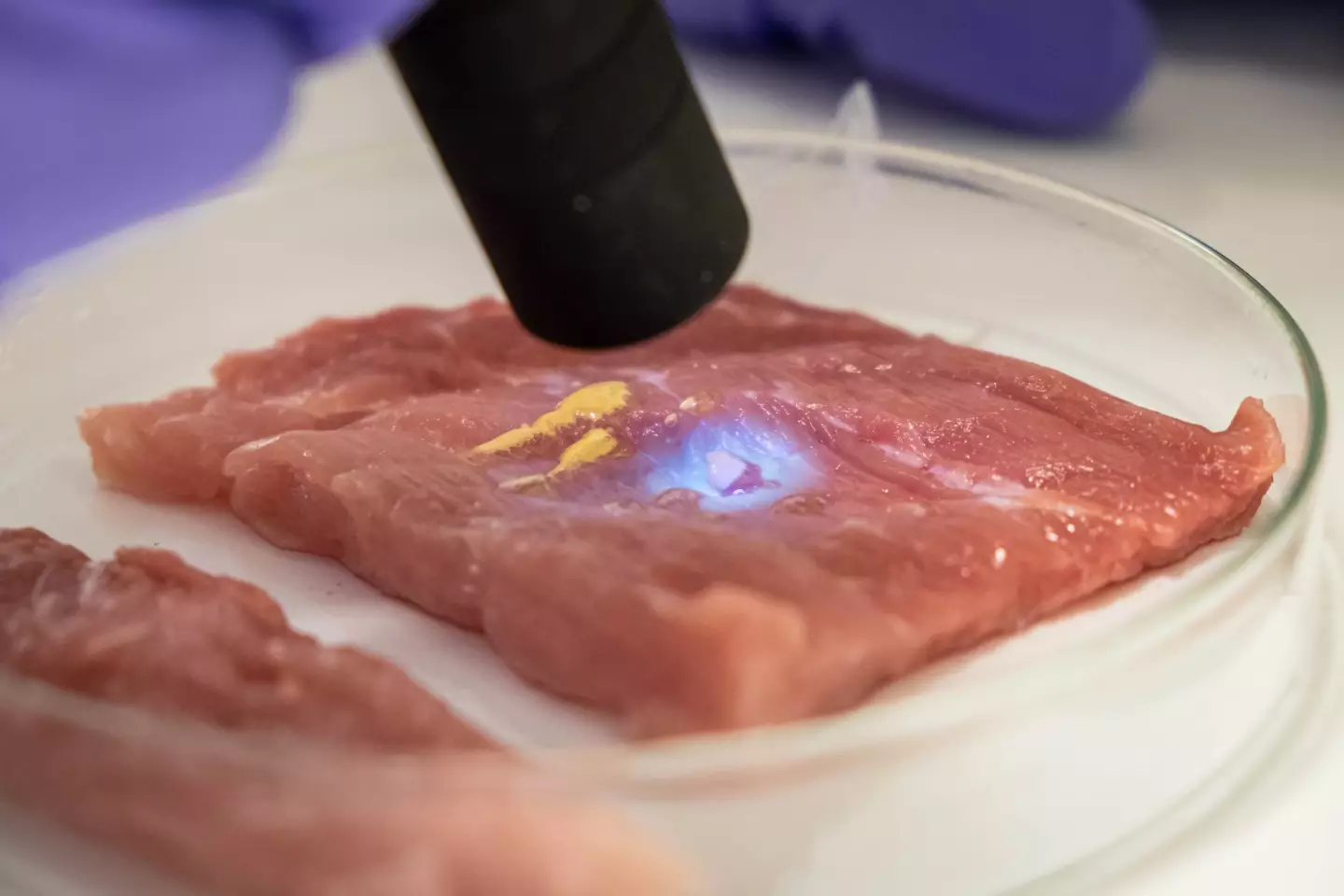When suturing wounds within the body, there's a risk of damaging the tissue, and of the development of infections. A new type of surgical glue could reduce the need for sutures, though, plus it could close wounds faster while also delivering medication.
Known as CaproGlu, the experimental material was created by scientists at Singapore's Nanyang Technological University. It's made up of two main ingredients: an FDA-approved biodegradable polymer by the name of polycaprolactone, and an organic molecule called diazirine, which forms strong bonds when activated by ultraviolet light.
Unlike the case with some two-part adhesives, no catalyst chemicals need to be added. And as an added bonus, the glue isn't adversely affected by the gamma irradiation process that's commonly used to sterilize surgical equipment.
While still in liquid form, CaproGlu is applied directly to a wound or incision in wet biological tissue. It is then exposed to a low dose of ultraviolet light for a few seconds, triggering it to transform into a solid but flexible rubber. As it does so, it displaces liquid on the surface of the tissue, allowing for a firm bond – it reportedly has an adhesion strength that's three to seven times stronger than that of commercially available bioadhesives.

The rubber proceeds to gradually and harmlessly biodegrade over the next few weeks, as the wound heals. In lab tests, a severed artery in a rabbit was joined back together using four stitches and a wrap made up of a biodegradable mesh dipped in CaproGlu – ordinarily, eight stitches would have been required. After seven days, the artery had completely healed.
Additionally, in tests performed on rats, CaproGlu was able to gradually release a local anesthetic at a wound site within the leg. It is believed that once developed further, the glue could also be loaded with medications that speed the healing process and prevent infection.
A paper on the research – which is being led by Assoc. Prof. Terry W.J. Steele and Dr. Ivan Djordjevic – was recently published in the journal Biomaterials.
Source: Nanyang Technological University





